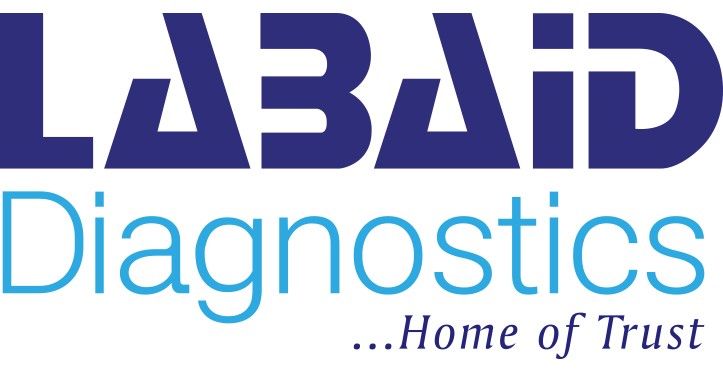Liver Disease - Symptoms, Diagnosis, Test
Did you know that the Liver is the only organ in the body that can regenerate?
Overview
Did you know that the Liver is the only organ in the body that can regenerate?
The liver is one of the largest organs in the body and is located in the upper right-hand part of the abdomen and behind the lower ribs.
The liver is associated with many vital functions of the body such as:
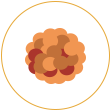
Cholesterol Synthesis

Hormones and Enzymes Productions
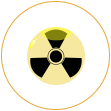
Deactivation of Toxic/Poison

Stores Critical Vitamins

Bile Production

Warehouse of Glucose
- Deactivation of Toxic/Poison
The liver metabolizes and detoxifies drugs and substances that are harmful to the body. - Bile Production
The liver secretes bile juice into the intestine which helps in dissolving fat and other nutrients from food. - Warehouse of Glucose
TIt serves as a warehouse of glucose inside the body. - When there is excess glucose in the body it converts glucose into glycogen bundles and stores it.
- When there is less glucose in the body it converts glycogen back into glucose.
- Cholesterol Synthesis
Overall the fat in the body is managed by the liver. Once the liver is full of glycogen, the liver starts converting glycogen into fat which is then transported to the rest of the body via the blood. - Stores Critical Vitamins
The liver serves as a storage house for many critical vitamins like A, D, E, K and B12 - Hormones and Enzymes Productions
It produces blood clotting factors, proteins, and enzymes, helps maintain hormone balances
Symptoms
Liver disease may not cause any symptoms at first or the symptoms may be nonspecific, like weakness and loss of energy.
In acute liver disease, the most common signs and symptoms include:

Yellow skin and eyes (Jaundice)
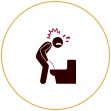
Dark urine
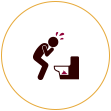
Pale stool color

Loss of appetite
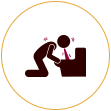
Nausea and Vomiting

Diarrhea
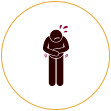
Abdominal pain and swelling

Unexplained weight loss or gain
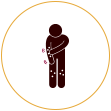
Itchy Skin
- Yellow skin and eyes (Jaundice)
Jaundice, a yellow tint to the skin or eyes caused by an excess of bilirubin - Dark urine
Dark urine, because of the bilirubin excreted through the kidneys. - Pale stool color
Pale stool color, if the liver is not producing enough bile or if the flow of bile is blocked - Loss of appetite
Loss of appetite which may lead to weight loss - Nausea, Vomiting, Diarrhea
- Abdominal pain and swelling
Abdominal pain, located on the right side of the body, beneath the ribs - Unexplained weight loss or gain
- Itchy Skin
Itchy Skin, when normal liver function decreases
Are you at risk of liver disease?
Factors that may increase the risk of liver disease include:

Heavy alcohol use

Injecting drugs using shared needles

Tattoos or body piercings
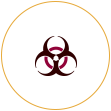
Exposure to certain chemicals or toxins

Diabetes

Obesity
- Heavy alcohol use:Heavy alcohol use can cause the liver to become inflamed and swollen.
- Injecting drugs using shared needles:Injecting drugs using shared needles increases the chance of Hepatitis C.
- Tattoos or body piercings: Tattoos or body piercings done using unsterile equipment may cause hepatitis C and serious liver disease.
- Exposure to certain chemicals or toxins:Exposure to certain chemicals or toxins.
- Diabetes:Diabetes raises risk of nonalcoholic fatty liver disease.
- Obesity:Obesity often results in the accumulation of fat cells in the liver.
Types of Liver Disease
Liver disease is any condition that causes liver inflammation or damage and may affect liver function.
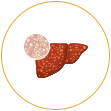
Fatty Liver Disease
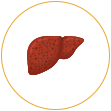
NASH
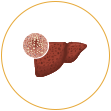
Liver Fibrosis
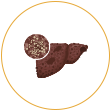
Cirrhosis

Hepatitis
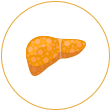
Jaundice
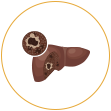
Liver Cancer

Bile Duct Diseases
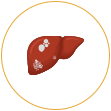
Wilson Disease
- Fatty Liver Disease
- A healthy liver under normal circumstances contains little or no fat at all.
- Extra fat produced and stored by the liver can sometimes lead the liver itself to get fat resulting in Fatty Liver Disease.
- Even in cases of alcohol or little alcohol intake can result in Fatty Liver Disease, This is known as Non-Alcoholic Fatty Liver Disease.
- It's a silent killer as it produces no or very little symptoms unless detected specifically.
- It can lead to liver cancer or complete liver failure if not treated in time.
- Alcoholic Fatty Liver disease is seen in people who consume alcohol heavily.
- The condition is reversible if the person stops drinking alcohol.
- Non-Alcoholic Fatty Liver Disease (NAFLD) is the fat deposition in the liver even when a person does not consume or consumes very little of alcohol
- Nonalcoholic steatohepatitis (NASH)
- NASH is a more severe form of NAFLD. In the case of NASH, along with fat accumulation, there is inflammation and cell death in the liver.
- NASH can progress to more serious disease stages, such as advanced fibrosis, cirrhosis, liver failure, or liver cancer, driven by hepatocellular ballooning and inflammation.
- The symptoms of NASH are often invisible until the liver is damaged beyond repair.
- Hypertension
- Heart disease
- High blood lipid levels,
- Insulin resistance,
- Type 2 diabetes
- Obesity
- Liver Fibrosis
- Liver fibrosis occurs after a person experiences injury or inflammation in the liver such as in NASH and other diseases. It is due to the excessive accumulation of extracellular matrix proteins including collagen that occurs in most types of chronic liver diseases.
- The liver’s cells stimulate wound healing. During this wound healing, excess proteins such as collagen and glycoproteins build up in the liver.
- Eventually, after many instances of repair, the liver cells (known as hepatocytes) can no longer repair themselves. The excess proteins form scar tissue or fibrosis. Advanced liver fibrosis results in cirrhosis, liver failure, and portal hypertension and often requires liver transplantation.
- Medications and lifestyle changes can help to keep fibrosis from getting worse.
- Cirrhosis
- Cirrhosis is scarring of the liver. Scar tissue forms because of injury or long-term diseases like Fatty liver, NASH, Hepatitis, etc. Cirrhosis can lead to many diseases like Kidney failure, Jaundice, Gallstones, etc.
- Hepatitis
- Hepatitis A: Poor sanitation and not washing hands regularly is considered one of the main reasons for the spread of hepatitis A.
- Hepatitis B and C: It spreads through the contact of infected body fluids especially with contaminated needles or unprotected sex.
- Hepatitis D: It can only infect people who are already infected with hepatitis B.
- Hepatitis E: This is water or foodborne infection.
- Jaundice
- In Jaundice skin and the whites of the eyes turn yellow and is caused by excess bilirubin.
- Bilirubin is a yellow chemical in hemoglobin, the substance that carries oxygen in red blood cells. As red blood cells break down, the body builds new cells to replace them and the old ones are processed by the liver.
- If the liver cannot handle the blood cells as they break down, bilirubin builds up in the body and skin may look yellow.
- Liver Cancer
- Having hepatitis B or C
- Heavy alcohol use
- Having cirrhosis, or scarring of the liver
- Having hemochromatosis, an iron storage disease
- Obesity
- Diabetes
- Bile Duct Diseases
- The liver makes a digestive juice called bile which helps in breaking down fat. Gallbladder pushes the bile into tubes called bile ducts carrying the bile to the small intestine.
- Different diseases can block the bile ducts and cause a problem with the flow of bile:
- Wilson Disease
Alcoholic Vs Non-Alcoholic Fatty Liver Disease
Risk factors for NASH include but not limited to
Hepatitis is an inflammation of the liver which can be caused by various reasons like infections or viruses. There are various types of hepatitis as:
Liver cancer primarily starts in the liver whereas Metastatic liver cancer starts in other parts of the body and spreads to the liver.
Risk factors for Liver Cancer include:
Gallstones: Solid particles that form from bile cholesterol and bilirubin in the gallbladder. It can increase pressure in the gallbladder and cause a gallbladder attack.
Cancer
Infections
Birth defects,such as biliary atresia. It is the most common reason for liver transplants in children.
Inflammation,which can cause scarring. Over time, this can lead to liver failure.
Wilson Disease is a rare inherited disorder that prevents the body from getting rid of extra copper. With Wilson disease, the copper builds up in the liver and it releases the copper directly into the blood resulting in damage to the brain, kidneys, and eyes.
How is Liver disease diagnosed?
There are various tests used to diagnose various liver diseases.
Liver Function Test
It is a group of tests that are performed together to detect, evaluate, and monitor liver disease or damage. The panel usually consists of several tests that are run at the same time on a blood sample. These typically include:
- Alanine Aminotransferase (ALT)
- Aspartate aminotransferase (AST)
- Gamma Glutamyl Transpeptidase (GGTP) An enzyme that is found in many organs throughout the body, with the highest concentrations found in the liver. GGT is elevated in the blood in most diseases that cause damage to the liver or bile ducts.
- Bilirubin, Total
- Bilirubin, Direct
- Alkaline Phosphatase (ALP)
- Albumin
- Total Protein
An enzyme found mainly in liver tissue and to a lesser extent in the heart, kidney and skeletal muscle. It’s measurement is clinically useful in the diagnosis of liver and biliary disease.
An enzyme found in several parts of the body, including the heart, liver, and muscles.
Since AST levels aren’t as specific for liver damage as ALT, it’s usually measured together with ALT to check for liver problems. When the liver is damaged, AST can be released into the bloodstream. A high result on an AST test might indicate a problem with the liver or muscles.
It is used to detect an increased level of bilirubin in the blood. It helps to determine the cause of jaundice and diagnose conditions such as liver disease, hemolytic anemia, and blockage of the bile ducts.
It measures a form of bilirubin that is conjugated (combined with another compound) in the liver; It is only increased in the case of liver disease.
An enzyme related to the bile ducts but also produced by the bones, intestines, and during pregnancy by the placenta (afterbirth).
High levels of ALP may indicate liver inflammation, blockage of the bile ducts, or bone disease.
Albumin is the main protein made by the liver. This test measures the level of albumin in the blood. A low result indicates that the liver isn’t functioning properly.
The total protein test measures the total amount of protein in the blood and specifically looks for the amount of albumin and globulin. It also measures the ratio of albumin to globulin in the blood known as the “A/G ratio.”
Total Protein is useful in evaluating patients for nutritional status, liver disease, protein losing renal and gastrointestinal diseases.
Ammonia Test
Ammonia Test is used to detect an elevated level of ammonia in the blood that may be caused by severe liver disease, kidney failure, or certain rare genetic disorders.
Ceruloplasmin Test
Ceruloplasmin is the major copper-carrying protein in the blood, and also plays a role in iron metabolism. Ceruloplasmin testing is used to help diagnose Wilson disease, an autosomal recessive disorder. Low levels may also occur in Menkes syndrome which is a genetic defect in copper absorption.
Bile Acids, Total
Increases in serum bile acids may be a marker for acute hepatitis, chronic hepatitis, liver sclerosis, liver cancer, and intrahepatic cholestasis of pregnancy.
NAFLD (Non Alcoholic Fatty Liver Disease) Fibrosis Score
It is a non-invasive scoring system based on several laboratory tests that help to estimate the amount of scarring in the liver.
